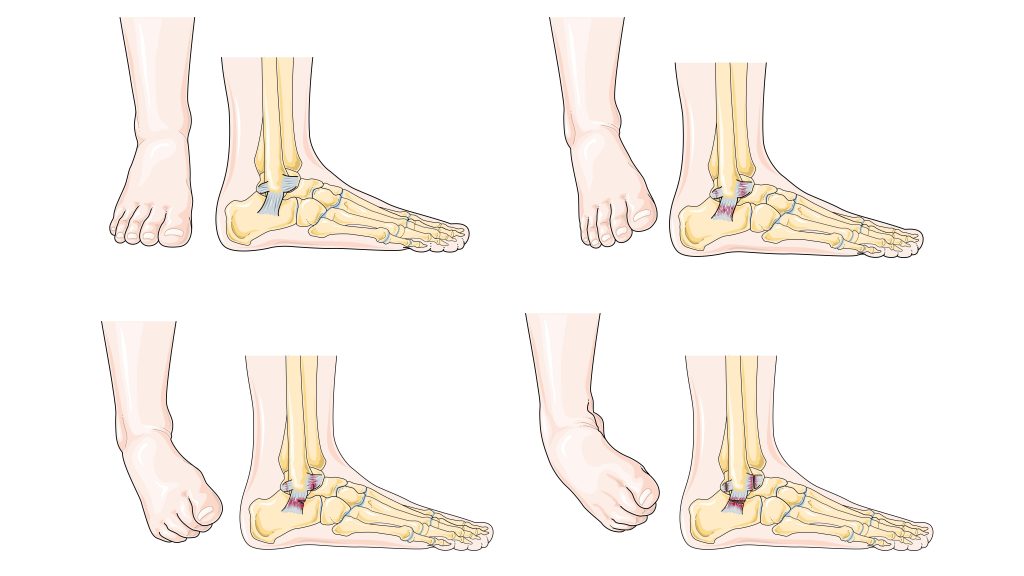Sprained ankles are one of the most common orthopedic injuries. We’ve all twisted our ankle and sprained it at least once in our lifetime. Yet, ankle sprains should not be taken lightly and must receive treatments as soon as possible. Otherwise, you risk facing irreversible consequences that could disrupt your lifestyle.
Overview
Your ankle has more than one ligament, and when one of them gets partially or completely torn, it results in an ankle sprain. Lateral ligament or inversion-type injures are the most common types of ankle sprains. The injuries are typically sustained when your ankle twists or turns awkwardly when you trip or fall. Inadequate ankle sprain rehabilitation after an ankle sprain can increase the risk of the injury occurring again.
The most frequently injured ankle ligament complex is the anterior talofibular ligament (ATFL), as this also happens to be the most commonly sprained ligament in the body. The least likely to get injured is the posterior talofibular ligaments (PTFL) and calcaneo-fibular (CFL) due to their location.
The deltoid ligament complex, comprised of the posterior tibiotalar (PTTL), anterior tibiotalar ligaments, and tibionavicular , on the medial side can sustain an injury due to forceful pronation and turning motions of your hind foot. The combined external turning of your leg and your ankle’s dorsiflexion can cause a syndesmotic sprain or high ankle sprain.

With an acute ankle sprain, you can seek and receive treatment right away without a doctor’s prescription, utilizing Direct Access. Call and schedule an appointment with Dan, Michael, or Diana for ankle sprain treatment at Specialized Physical Therapy.
Symptoms
Ankle Sprain Symptom Checker:
- History of ankle rolling
- Hearing a popping or cracking sound at the time of injury
- Swelling, bruising, and pain in the affected area
- Tenderness at the injury site
- Inability to walk or stand on your foot
High Ankle Sprain Symptoms:
- Feeling pain above your ankle that increases with outward movement
- Pain with walking
- Swelling and bruising above the ankle
- Inability to perform single-leg calf raises
Causes
The causes of ankle sprain include:
- A fall that causes you to twist your ankle
- Landing on your foot awkwardly after pivoting or jumping
- Working out or walking on uneven ground
- Another person landing or stepping on your foot during physical activity such as sports
Ankle Sprain Diagnosis
Specialized Physical Therapy will perform a comprehensive physical examination. Along with asking you questions about your medical history and injury, including past injuries to the affected area, our physical therapists will perform a complete foot and ankle assessment.
This includes the mechanism of injury, standing posture, observing your gait pattern, and the type of shoes you wear commonly wear. We will examine your foot and ankle for any gross deformity, atrophy or the malalignment of your musculature. The examination also includes any ecchymosis and(or) edema.
Our physical therapists will palpate the structures involved in and around the ankle joint. This diagnosis includes palpating the muscle, bone, and ligamentous structures. Lastly, we will perform an active and physical range of motion examination.
We may also perform an anterior draw test to examine the ATFL, a talar tilt test to examine the CFL, the squeeze test for the syndesmotic sprain, and/or an external rotation stress test or the Kleiger’s test to examine the syndesmotic sprain.
We recommend you come to us as soon as possible after sustaining an acute ankle sprain. The quick consultation can allow us to start treatment to ease ankle pain and swelling. Consequently, this can increase the healing and recovery time.
Ankle Sprain Physical Therapy Treatment and Exercise
Specialized Physical Therapy will work with you to create a personalized Home Exercise Program (HEP) for your ankle sprain rehabilitation. The treatment plan is based on the severity of your injury, diet, lifestyle, medical conditions and restrictions, and other factors. By performing specific exercises targeted towards the recovery and maintenance of your sprained ankle, you can resume your daily routine faster without the risk of spraining your ankle again.
Ankle sprain physical therapy treatment offers injury protection, alleviates pain, and controls inflammation. It helps you regain a complete range of movement, supports your ankle and calf muscles, and restores joint balance and proprioception. More importantly, it restores normal functions such as walking, running, and jumping, and landing.
If you injured your ankle while playing a certain sport, we would focus on teaching you techniques and workouts that improve your speed and agility, along with sport-related skills needed to boost performance to help you resume the sport.
Do not delay pursuing ankle sprain rehabilitation, as it can aggravate the pain and take longer for your ankle to heal from the injury fully. If you have an ankle sprain, contact us at 201-773-8851 or email us HERE to schedule your ankle sprain physical therapy treatment.

